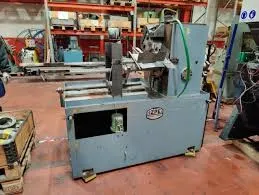
-
 Afrikaans
Afrikaans -
 Albanian
Albanian -
 Amharic
Amharic -
 Arabic
Arabic -
 Armenian
Armenian -
 Azerbaijani
Azerbaijani -
 Basque
Basque -
 Belarusian
Belarusian -
 Bengali
Bengali -
 Bosnian
Bosnian -
 Bulgarian
Bulgarian -
 Catalan
Catalan -
 Cebuano
Cebuano -
 Corsican
Corsican -
 Croatian
Croatian -
 Czech
Czech -
 Danish
Danish -
 Dutch
Dutch -
 English
English -
 Esperanto
Esperanto -
 Estonian
Estonian -
 Finnish
Finnish -
 French
French -
 Frisian
Frisian -
 Galician
Galician -
 Georgian
Georgian -
 German
German -
 Greek
Greek -
 Gujarati
Gujarati -
 Haitian Creole
Haitian Creole -
 hausa
hausa -
 hawaiian
hawaiian -
 Hebrew
Hebrew -
 Hindi
Hindi -
 Miao
Miao -
 Hungarian
Hungarian -
 Icelandic
Icelandic -
 igbo
igbo -
 Indonesian
Indonesian -
 irish
irish -
 Italian
Italian -
 Japanese
Japanese -
 Javanese
Javanese -
 Kannada
Kannada -
 kazakh
kazakh -
 Khmer
Khmer -
 Rwandese
Rwandese -
 Korean
Korean -
 Kurdish
Kurdish -
 Kyrgyz
Kyrgyz -
 Lao
Lao -
 Latin
Latin -
 Latvian
Latvian -
 Lithuanian
Lithuanian -
 Luxembourgish
Luxembourgish -
 Macedonian
Macedonian -
 Malgashi
Malgashi -
 Malay
Malay -
 Malayalam
Malayalam -
 Maltese
Maltese -
 Maori
Maori -
 Marathi
Marathi -
 Mongolian
Mongolian -
 Myanmar
Myanmar -
 Nepali
Nepali -
 Norwegian
Norwegian -
 Norwegian
Norwegian -
 Occitan
Occitan -
 Pashto
Pashto -
 Persian
Persian -
 Polish
Polish -
 Portuguese
Portuguese -
 Punjabi
Punjabi -
 Romanian
Romanian -
 Russian
Russian -
 Samoan
Samoan -
 Scottish Gaelic
Scottish Gaelic -
 Serbian
Serbian -
 Sesotho
Sesotho -
 Shona
Shona -
 Sindhi
Sindhi -
 Sinhala
Sinhala -
 Slovak
Slovak -
 Slovenian
Slovenian -
 Somali
Somali -
 Spanish
Spanish -
 Sundanese
Sundanese -
 Swahili
Swahili -
 Swedish
Swedish -
 Tagalog
Tagalog -
 Tajik
Tajik -
 Tamil
Tamil -
 Tatar
Tatar -
 Telugu
Telugu -
 Thai
Thai -
 Turkish
Turkish -
 Turkmen
Turkmen -
 Ukrainian
Ukrainian -
 Urdu
Urdu -
 Uighur
Uighur -
 Uzbek
Uzbek -
 Vietnamese
Vietnamese -
 Welsh
Welsh -
 Bantu
Bantu -
 Yiddish
Yiddish -
 Yoruba
Yoruba -
 Zulu
Zulu
high quality thread rolling machine setup
Setting Up a High-Quality Thread Rolling Machine
Thread rolling is a highly efficient and widely used method in the manufacturing industry for producing threaded components. To achieve high quality and precision in thread rolling, a proper setup of the thread rolling machine is crucial. This article outlines the essential steps and considerations for setting up a high-quality thread rolling machine.
1. Understanding The Basics
Before diving into the setup process, it is important to understand the basics of thread rolling. Thread rolling is a cold forging process that deforms the material to create threads. The method is favored for its ability to produce strong, precise threads with minimal waste. Understanding the mechanics of the machine and the material being used is essential for successful operation.
2. Selecting the Right Machine
Choosing the appropriate thread rolling machine is the first step in ensuring quality output. The type of machine should align with the specific needs of the application, including the diameter and length of the threads, material type, and production volume. Consider machines that are designed for high precision and durability, as these factors significantly impact thread quality.
3. Preparing the Material
Before rolling threads, ensure that the material is correctly prepared. The workpiece should be of uniform size and free of any defects that could affect the threading process. Proper cleaning and inspection of the material are critical to avoid any interruptions during production.
4. Aligning the Machine Components
high quality thread rolling machine setup

A successful setup begins with aligning the machine components accurately. This includes positioning the workpiece holder and checking the feed mechanism. Ensure that the thread rolling dies are adjusted to the correct depth and alignment. Misalignment can lead to poor quality threads and increased wear on the machine.
5. Adjusting the Die Configuration
The die configuration is one of the most critical aspects of the setup process. The dies used in thread rolling can significantly influence the outcome of the threads. Adjust the die settings according to the required thread specifications. Ensure that the pitch, depth, and form of the threads meet the design standards.
6. Calibration and Testing
Once the machine is set up, calibrate it for optimal performance. This involves checking the speed, pressure, and alignment of moving parts. Perform a test run with a sample workpiece to verify that the setup produces the desired thread quality. Monitor the first few outputs closely for any signs of defects or discrepancies.
7. Maintenance and Quality Control
After achieving a successful setup, it is important to establish a routine maintenance schedule for the thread rolling machine. Regular maintenance helps in prolonging the life of the machine and ensuring consistent quality. Implement quality control measures by inspecting the threads periodically during production to ensure they meet the required standards.
Conclusion
Setting up a high-quality thread rolling machine requires careful consideration of various factors, from machine selection to die configuration and regular maintenance. By following these guidelines, manufacturers can achieve precision in their thread rolling processes, leading to enhanced product quality and reduced production costs. A well-set-up thread rolling machine not only improves output quality but also increases overall efficiency in manufacturing operations.
